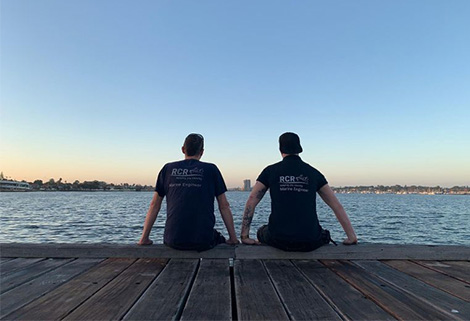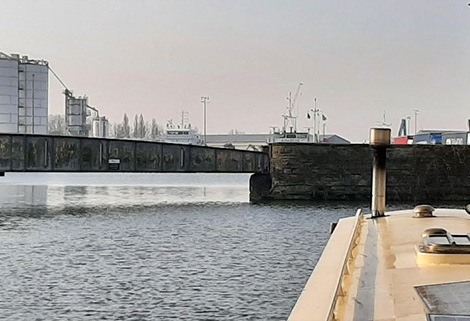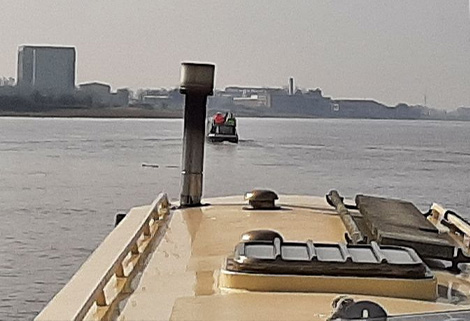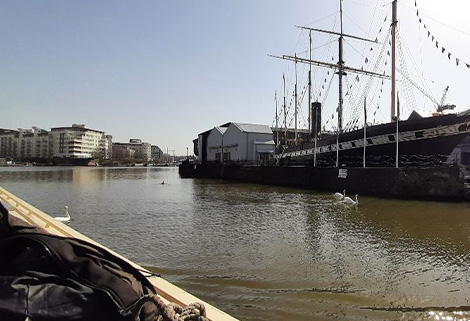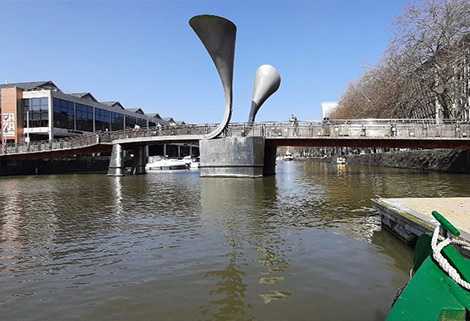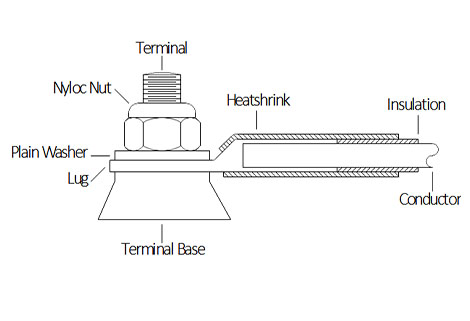back to the drawing board
the world's greatest inventions
During a recent conversation between friends and family, the question was asked, what do you think was the greatest invention for the human race and for you personally?
This got me thinking about all the fantastic inventions that have enhanced, enriched, saved or made our lives easier in today’s fast track society.
Yes there have been many, many ingenious achievements throughout the years, some have brought devastation and misery and instilled fear into people, but the majority of them have saved and prolonged lives, some have brought sheer enjoyment through entertainment, and educated us to a standard that was beyond most civilisations in the early years of our species.
Some simple ideas have literally changed the world that we live in today; how would we cope today without medicine, surgery, electricity, cars, planes, television, music, telephones, computers or things that we never give a second thought to, items such as books, plastic, glass, buttons or the alphabet? Makes you think doesn’t it?
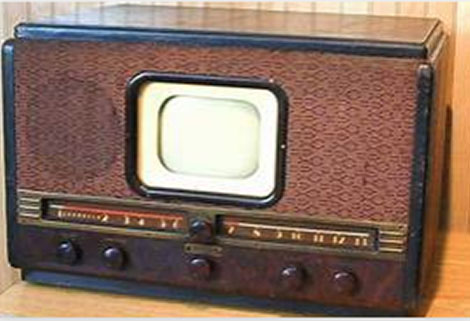

Things that we take for granted today, at one point had to be invented by someone who was dedicated enough to pursue their ideas and dreams to get them to fruition. Some took years of time-consuming experiments, some were left by the wayside only to re-emerge later in years to come, but come they did.
To all the inventors who painstakingly took years in perfecting their art, we at Bearingtech applaud you, as we know how difficult it is trying to get a project to market and into the mainstream.
During the next few paragraphs, we have listed some of these inventions that did get to the end of the drawing board and made a massive impact. Some have made a smaller difference but important nonetheless. The following are not in any particular order or relevance, but just our opinion. If we have left your favourite out we apologise, what would be yours?
Throughout the years, thousands of inventors from a vast array of fields, from medicine to trains, from flight to entertainment, have spent many hours trying to solve problems that would make the world a safer, easier place to live in. All of these inventors have made a significant effort in doing so.
Television – Thomas Edison 1891
Probably one of the most famous inventions, and one that would appear in most people's favourite lists. Personally speaking; it is my preferred choice of invention that has bridged the gap in education and entertainment alike.
Consider the amount of information that television brings to the masses: it enables us to see the world in all its glory, something that people would never be able to see for themselves in person; it helps us to connect with other countries' current affairs and also allows us to be entertained by viewing sports events, concerts, films and news stories.
For someone who is seen as a pioneering genius, Edison surprisingly didn’t learn to speak until he was 4 years old. He was taken out of contemporary school at the age of 11, because the teachers had tremendous difficulty in controlling him. His parents decided to self tutor him at home, giving him the time and dedication that he needed and thrived on.
From an early age, Edison had an interest in sound and vision. He worked in the telegraph industry after being offered a position by the owner, after he saved the owner's child from a terrible accident. The experience and knowledge that he gained from the telegraph industry formed the background and the beginning for the television and phonograph inventions that were to come.
Radio – Guglielmo Marconi 1450
Although always seen as the father of radio, Marconi was not the first person to build a wireless unit, that honour was credited to Nikolai Tesla, who unfortunately failed to get the patent on his device filed quickly enough, enabling Marconi to steal the limelight.
Like the television, radio has brought endless entertainment to the masses and has enabled reporting on worldwide events, keeping the people up to date with news. This was certainly the case during World War 2, where the radio was a vital piece of equipment and played a significant part in the war effort, keeping people's spirits up.
Photography –Louis Daguerre 1837
Louis Daguerre developed the first known photograph after his colleague Joseph Nicephore Niepce had invented a process that unfortunately took too long to develop; his method needed eight hours of daylight to develop an image. Daguerre later readjusted the system and developed the Daguerreotype process, which produced the first viable photographic photo.
During the 19th century, once photography had become common, it was the custom to take photographs of dead people in portraits, alongside headless shots, which were seen as a kind of magical effect, weird but true.
The first “selfie” was actually taken in 1839 by Robert Cornelius in Philadelphia, the word selfie as we know it today, was coined by a drunk Australian man in 2002, after a wild night on the town.
According to a recent survey, we now take more photographs every two minutes, than the whole of humanity did in the 19th century; the 250 million photos, uploaded onto Facebook every day, has now surpassed this.
If you asked people, “what is the most viewed photograph in history”? Most would not say the Old Windows screen saver, showing a brow of a hill with a blue sky, but in fact it is, the image was created by Charles O`Rear, who was rumoured to be paid around $100,000 for the print which has been seen by millions.
Talking of famous photographs, probably one of the most iconic shots ever taken was that of astronaut Neil Armstrong standing on the moon in 1969, whether you believe the conspiracy or not, it’s a good photo; apparently the camera that took the shot is still on the moon, according to NASA.
One of the most famous photographic companies, Kodak, nearly went bankrupt in 2012, when they had to sell off several of its patents to stop it going into liquidation.


The Boat / Ship – 8,000-10,000 Years ago
The first boats / ships were believed to be built by the prehistoric hominid species, Homo erectus. The oldest boat found was discovered in Holland. It was named the Pesse canoe and is believed to date from around 8,000 BC. The boat measured at around 3 metres and was mainly constructed with wood / bamboo and tied together with palm fibres or vines.
The Egyptians are credited with being the first boat builders. They used papyrus reeds and rowed using paddles. There are early representations of these ships / boats being used to transport obelisks along the Nile. These are deemed to be over 300 feet long, longer than any other wooden warship ever built, and are regularly depicted on vases and urns.
Throughout the years, the ship has played a massive part in history, especially during troubled times such as wars and conflicts, with the English, Spanish, French, Dutch, Danish, Portuguese, German and most other European nations at the forefront on the water.
There are many famous ships that are not far away from people`s minds, when discussing history: ships such as The Titanic, The Victory or The Cutty Sark. All helped make the world became more accessible.
Moving on from the early years to the current climate, there seems to be this obsession with building bigger and better ships, boats or super yachts that are owned by the rich and famous, They are all a long way from the early wooden varieties.
Ball Bearing – Early Roman Times
The history of the bearing or ball bearing literally goes back centuries. They were first found on the wrecks of Roman ships, where a wooden ball bearing was seen to be supporting a rotating table.
The famous inventor Leonardo Di Vinci incorporated ball bearings into his helicopter drawing, becoming the first in aerospace design. Some 200 years later, Galileo described the captured or caged ball in a scripture.
John Harrison invented the first known caged roller bearing, for a marine timekeeping machine; he also used the same bearing in a contemporary regular clock.
During 1883, we saw the introduction of an independent bearing industry by the founder of FAG, Friedrich Fischer, who would establish the company as a leading contender in the bearing industry.
A few years later saw the first patented tapered roller bearing, being awarded to the innovator and carriage manufacturing, inventor, Henry Timken, who established a company to produce his designs and ideas. Over the next century the company grew into manufacturing all types of bearings, specialising in steel examples.
In 1974 the first recorded patent on ball bearings was awarded to a British inventor and ironmaster called Philip Vaughan. His design incorporated a ball running along a groove in an axle assembly.
The modern self-aligning ball bearing was patented and awarded to Sven Wingquist of the Swedish manufacturing company SKF, who are one of the biggest producers in the world today.
All three of these companies have established themselves as the forerunners for the bearing industry, supplying various types sizes and designs to this day.
Coming forward to the present day, you would be hard pushed to find a piece of machinery that doesn’t contain a bearing of some sort; everything from an assembly line to a delivery drone will contain a bearing of some description and size.
Sometimes the smallest and simplest ideas turn out to be the best and have the most impact.


Gunpowder – China – 10th Century
Listed as one of China`s greatest inventions, gunpowder was developed during the late Tang Dynasty (10th century) and quickly spread throughout Asia, the Middle East and Europe due to the Mongol conquests during the 13th Century.
Some written formulas for its make up were discovered in the Middle East as early as 1240, but whether this was the same formula as the early Chinese version, nobody knows. It was employed in warfare to great effect from as early as the 10th century in weapons, such as fire arrows, hand held and propelled bombs and fire lances, long before the appearance of the gun in the 13th Century.
Although the gun eventually replaced the lance, other similar weapons such as rockets, arrows and firebombs, continued to be used in China, Korea, India and later in Europe.
Apart from the weaponry, gunpowder was also used in early Chinese fireworks, something that has remained to this day across the world.
Other industries such as mining and tunnelling have been made easier with the use of the new substance, making the digging and prospecting of mines much quicker.
The Windmill – Roman Egypt – 1st Century
Probably one of the most iconic pieces of engineering that has been around for a very long time, so long that the first one was credited to a Greek engineer who was living in Roman Egypt during the 1st century. He used it to power a machine. Nobody knew his name, but he was known locally as Hero; quite ironic really.
The Persians were also great builders of windmills, something that would soon become widespread across China, India and the Middle East.
The first windmills were not seen in Europe until the 18th -19th centuries, with one of the earliest examples being the Southtown Windmill in Great Yarmouth which stood at an impressive 102 feet.
One of the biggest theories regarding the windmill is associated with the Dutch. Legend has it, that without them, the Netherlands would not exist, as they were used to pump away the water from the sodden marshes. By doing this, farmers were able to plant their crops, vegetables and plants, and o course tulips, something which became so successful. Holland is seen today as one of the biggest exporters of flowers across the horticultural industry.
Spring forward to the 21st century, windmills as such are once again playing a massive part in the way we provide energy, with thousands of wind turbines being erected in virtually every country in the world to try and combat climate change by using wind power instead of fossil fuels.
Looks like windmills are here to stay. Hero would certainly be impressed.
The Refrigerator – William Cullen – Scotland 1755
The history of the refrigerator began in 1755 when Scottish professor William Cullen designed the first small refrigeration machine. Later in 1855, inventor John Gorrie developed the first functional vapour compression model, which was designed to relocate heat from one place to another and is still used in today's models.
The first commercial model was produced by General Motors back in 1911. Their model, Kelvinator was to prove incredibly successful, and by 1923 had close to 80% of the American market. Today the refrigeration market in the USA can boast sales of over 8 million various models per year.
When you think of the biggest refrigerator, you immediately think of one of the big food producers, but you would be surprised that this honour goes to the Hadron Collider on the border of France and Switzerland, where a 27-kilometer long cryogenic distributor is situated.
Although refrigeration is normal by today’s standards, the early years were very different, commodities such as tea, tobacco and coffee were very expensive, surprisingly ice was also seen as one of these products that were not affordable by everyday folk.
Many upmarket households would order ice direct from Norway in large chunks and store them in underground ice houses, that sometimes were 6 metres high by 4 metres across and could store ice for up to a year before melting. Many of these icehouses are now listed buildings and protected due to their construction and the artistry of the builders.


The Bicycle – Karl von Drais – 1817
During 1817, Baron Karl von Drais invented a horseless carriage that would enable him to get around much faster, by pushing his feet against the ground, propelling himself forwards. The machine became known as the Draisine, and led to the creation of the modern day bicycle.
The term bicycle was not introduced until the 1860`s when the phrase was coined in France to describe a new kind of two-wheeler with a manual drive; the high wheel bicycle became popular in the 1870`s.
Two of the worlds` most famous inventors ran a bicycle repair shop in Ohio, USA. The people in question were the Wright brothers, Orville and Wilbur who were pioneers of flying and became known throughout the world as the inventors of modern day flight.
Back in the 1970s, former conservative MP Norman Tebbitt, was famously quoted as telling the nation “to get on their bikes, if they wanted to work”, causing quite a stir amongst the unemployed who saw it as a slur on their work ethics, something that backfired big-time on the Conservative party.
One man, Fred A. Birchmore, back in 1935, took that advice quite literally, and managed to take it to another level entirely, by cycling around the whole world. The whole trip took in Europe, Asia and the US and covered around 40,000 miles; he managed to pedal 25,000 of these and covered the rest by boat, when the roads were not available.
Over the years cycling has become ever more popular, with more people using pedal power rather than using the conventional types of travel such as cars or motorbikes. The greatest example of this is in China, where at the last count, over half a billion bicycles have been recorded by cyclists across the country.
In Europe, the Netherlands holds the record for most bicycle users with 30% of the population opting to travel by bike, in fact 7 out of 8 people over the age of 15 own a bicycle, compared to the Americans who only have a 1% ratio, choosing to use cars instead.
The biggest and most popular bicycle event without doubt is the Tour de France, which is seen as one of the most arduous and gruelling endurance sports around, where cyclists compete over a three week period on some of the toughest roads around France, culminating at the finish in Paris. Each year the coverage gets more intense as more countries and competitors take part, so much so, that part of the race recently has actually started in England.
The trend for cycling has certainly grown over the years, with over 100 million bicycles being made every year across the globe.
Books – 1st century China
Where would we be without the introduction of books?
The first book found was in fact a poem entitled “ Epic of Gilgamesh” which was laid out on 12 clay tablets, and found somewhere between 2700-2500 BC and is credited to be the oldest written piece on the earth.
Some interesting facts about books go from the macabre to the astonishing, including the term Anthropodermic Bibliopegy is given to binding books in human skin, which apparently were commonly used by Doctors in the early years of publishing. Why? Nobody knows.
- According to the Guinness World Records, the largest book in the world weighs in at an astonishing 3,000 lbs., and is titled “This is Prophet Mohamed”. It is based on the lifetime accomplishments of the Islamic Prophet.
- The oldest known library in the world is based in Egypt, where it has been operating from 565 AD.
- Another interesting fact about libraries, is the word “library” itself, which actually comes from the Latin word, liber, which means the tree`s inner bark.
- The youngest published author was Dorothy Straight, who at the ripe old age of 4 years and 3 months had her book “How the world began” placed into print. Dorothy wrote it in one evening after her parents ask her, “Who made the world? “ They were so impressed with the result, that they took it to Pantheon Books who published it.
- The best-known set of books has got to be the Harry Potter series, which are published in virtually every language and every country, and has made the author a household name. This was not always the case as in the early years, J.K Rowling was turned away by 12 different publishing houses, before finding one that agreed to take them on. What a great decision that turned out to be. JK Rowling however was not the first person to use the name Harry Potter in print; this accolade goes to a Polish author who used the name in a short story back in 1972. Many people have commented on the structure of the Potter stories, having made comparisons between JRR Tolkien`s Lord of the Rings trilogy and Harrys adventures.
- Probably one of the most famous children’s authors of all time, Roald Dahl insisted on being buried with some of his prized possessions, which included a bottle of burgundy, snooker cues, HB pencils, a power saw and bars of chocolate. He was buried in Oxford in 1990.
- One fascinating fact that you would not associate with romantic publishers Mills and Boon is road building, but according to transport records, 2.5 million copies of the damaged and deleted titles were used to repair the M6 motorway toll road. The contractors Tarmac confirmed that the books were pulped and recycled into as paste, which were added to the road surface mixture and laid; the pulp prevents cracks from appearing and helps to absorb the sound.
- There are many facts about books that could literally fill volumes by themselves, but a few interesting ones stick out, like the largest and longest novel ever written was by French author Marcel Proust who in 1913 had his novel published. It ran over 11 volumes.
- The most sold book in the world is The Holy Bible, with an estimated 3.9 billion copies in circulation.
- The most read titles are the Harry Potter adventure series, Quotations from Chairman Mao Tse-Tung and again the Holy Bible.
- The most expensive book ever sold was written by Leonardo Di Vinci in his own hand and was sold for $30.8 million dollars and purchased by Microsoft owner Bill Gates, so when you see Di Vinci images on Microsoft products, you know where they came from.
- Another famous author is credited with supplying the first type written manuscript in 1882, that author being Mark Twain, who supplied the words for “ Life on the Mississippi”, which eventually became Huckleberry Finn.
- One fascinating fact that is astounding, is a recent survey undertaken, recognised that one in five people across the globe could still not read or write, with the stats mainly coming from South West Asia and parts of Africa, which is a travesty, as they do not realise the joy that reading and writing can bring, and would enrich their lives enormously.
Robotics - Archytas of Tarentum – 400 BC

Throughout the years modern day life has been surrounded by robots, whether they are involved in car safety, space exploration, engineering, medical science, bomb disposal or adult leisure, there seems to be a robot for every trade and industry.
The inventions have become part of our everyday life, so much so, that could we now do without them, or want to? The answer is no, we could not, with developments and technology racing along at an astounding rate; it is only a matter of time before we have robotic androids as companions, partners or work colleagues.
Many film and TV series have already explored this by depicting Robots and Androids throughout their scripts and stories over the years.
One genre of robotics that has literally accelerated at an alarming and fascinating rate is the adult leisure industry. Although it is a taboo subject, you cannot ignore the technical brilliance that the inventors have created; some of their designs have taken robotics to another level.
Apart from looking and feeling like a human, these robots can actually talk, blink, move arms and legs and have a temperature and pulse. The next step is walking, which will be the final frontier. Once this is achieved, we will then have a fully functioning walking, talking, thinking android.
Although robots seem to be a thing of the 20th century, they were in fact first thought of way back in 400 BC, when a Greek inventor named Archytas of Tarentum built a wooden pigeon that flew through the air powered by steam along a line of rope.
Another well known inventor, Leonardo Di Vinci designed a robotic man back in the 13th century, makes you wonder where he got the idea from, especially as the word robot had not been invented, and nothing like this had been described by anyone in the world at this time.
There are many questions as to where the terms, robot, android and artificial intelligence came from. One British mathematician George Boole wrote a book titled “ An investigation into the laws of thought”. In the contents he describes the rules that were later used to program computers and robots, something which is still used in today`s development of robotics.
The Czech author Karel Capek is credited with using the word 'robot' for the first time, when he wrote the play called, Rossum`s universal robots.
American author Issac Asimov invented his “Three Laws of Robotics” in 1942, which describes how he thought robots should behave; this was indicated many times and transferred to his sci-fi novels and later films.
In 1966 a robot named Shakey became the first robot to use artificial intelligence to make its own decisions, and became the beginning of the term A.I, which had been originally used by inventor John McCarthy, who had first used the phrase back in 1956.
The power of robotics is fast becoming reality, with an estimated 1 million robots to be in existence by 2025. Researchers claim that by 2040 they will be as clever as humans.
Following on from this, experts speculate that due to the rise in popularity of robotics, humans marrying robots will be legal in the United States by 2050.
The Alphabet – Phoenician – 1050 BC
Can you imagine the world today without the Alphabet? Something that we use everyday, either through reading or writing, and is taken for granted.
Derived from Greek and Latin, our alphabet is made up from the first two words of the Greek version, Alpha - Beta, however the Greek alphabet itself can be traced back to Phoenician dialect of 1050 BC.
Around 100 different languages across the globe use the letters that are made up from the English alphabet, some have more, some less, but all core 23 letters are from the original Roman alphabet.
Although the letter A is one of the most used symbols of our English alphabet, the Egyptians used to use it upside down as they thought that it would represent a steer with horns.
E is the most used letter throughout our language, with J being the newest letter, added in 1500.
J and Q are the only letters that are not represented on the periodic table.

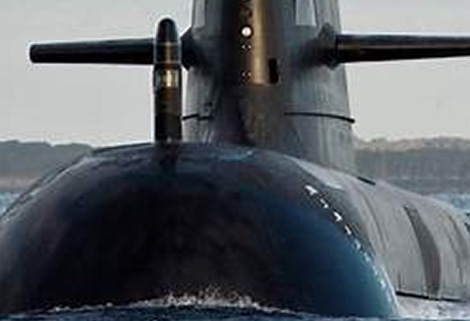
World Wide Web / The Internet – Sir Tim Berners- Lee 1989 – England
How many people log into the WWW or Internet everyday without giving it a second thought?
Just like the Alphabet, where would we be without it? Every day billions of people around the globe turn on their devices and search the web for either business or pleasure.
Surprisingly the Web and the Internet are not the same, although we speak of them in the same guise. The Web refers to collections of animations, digital photos, files, and music alongside text pages.
The Internet on the other hand, refers to networking infrastructures responsible for connecting millions of computers and other devices all over the world.
Invented by British engineer Tim Berners – Lee in 1989, the concept was not taken seriously by Berners- Lee`s boss at the time, who thought that it was interesting but unlikely.
The first ever website page to be placed online in 1991 is still in existence today and can still be found.
When you consider that the WWW is a fairly new concept with only a 25-30 year lifespan, the growth is absolutely astounding, as of today there are 945,357,100 websites available online, according to researchers there are more devices such as phones, tablets, computers and laptops connected to the internet, than there are human beings on the planet.
The term 'surfing' was coined by Jean Armour Polly who replied that he was “surfing the internet” when asked what he was doing back in 1992.
Alongside the Web, the most used concept is the Email system, which is used by millions everyday 24/7.
The US programmer Ray Tomlinson was the first person to invent the email system, he sent the first email in 1971, however this claim was disputed by an Indian bio- chemist called Shiva Ayyadurai, who stated that Tomlinson`s version was primitive, and that he himself had devised a better system when he was 14.
The first webcam was not used for chatting, it was meant for monitoring a coffee machine at the computer lab in Cambridge University, enabling people to see if the coffee pot was full, rather than walking all the way downstairs only to find the pot empty.
To give you an idea on how big the WWW / Internet is, if you decided to copy it all it would take 1 billion DVD`s or 200 million Blu ray discs, which would take quite a while. The thing is, once you got to the end, you would need to start again as more and more sites would have been added during the recording, so it would be a never ending process.
There are approximately 250 billion emails sent out everyday, according to experts 81% are made up of spam ones, this sits alongside the amount of images that appear on the Web which runs into tens of millions, surprisingly 80% of photographs that appear are of naked women.
Finally not all is as it seems, three of the biggest companies online, Amazon, Ebay and Twitter didn’t start out with those names, they had the names Cadabra, Echobay and Jitter respectively.


The Car / Automobile – 1885 – Carl Benz
The car as we know it, is an add - on to our households; many car owners see their vehicles as a necessity rather than a pleasure item or working tool.
The car has played a significant part in our development over the years, with the first version known as the Benz patent Motorwagen, which was designed by Carl Benz in 1885 and can be seen in the Beaulieu Motor Museum in Hampshire.
The first car built en-masse was the Model T Ford in 1908, which cost around $850 in 1908 but was actually cheaper by 1925 due to the invention of the assembly line, which enabled the vehicles to be built quicker culminating in more cars being produced.
From its humble beginnings, the car has become one of the most owned and sought after inventions known to man, with an estimated 1.2 billion cars in the world today, with an estimate of 2 billion by the time 2040 comes around, something which may be compromised by the introduction of the electric car, which most countries have adopted due to the fossil fuel ban in 2030.
Considering that the car is one of the most sought after possessions, it is amazing to find, that 95% of its life is spent being parked in the gutter or on driveways.
One fascinating fact to arise is in the preferred type of transmission that people choose, for some reason, Americans find it difficult to drive a manual car, with 95% of cars in the US having automatic gearboxes, on the other hand, Europe and Japan, the trend tends to go the other way where more than 80% of cars are manual.
The VW Beetle is one of the worlds popular cars ever made, with over 20 million models sold throughout the world since 1935, after Hitler commissioned an order to VW. He went on to say in one of his famous rallies “that every German should have the right to own a car, as long as it was a Beetle”.
When you think of the world`s most popular car, you would probably assume that either a Ford or a VW would come out on top, when in fact it is a Toyota. The Toyota Corolla claims to be the best selling vehicle, with sales of over 44 million models to date, apparently one Corolla is sold every 15 seconds.
When it comes to popularity, the Rolls Royce is seen as a driving icon, often associated with the rich and famous because of its style, elegance and prestige, amazingly, three quarters of the Rolls Royce cars ever built are still driving on the roads today, some things ARE built to last.
Cars seem to be going the same way as computers and robots, with more and more cars appearing in cities across the globe, especially in the bigger countries like America.
The amount of cars being produced on a daily basis is now staggering with the VW Group responsible for the majority of makes across Europe, which include twelve brands consisting of Audi, Seat, Skoda, Bentley, Bugatti, Lamborghini, Porsche, Ducati, Scania and their own VW group.
How long will it be before cars, like computers will be in every household?
DNA – Friedrich Miescher – 1869
Discovered in 1869 by biologist Friedrich Miescher, who identified it as a molecule whilst carrying out experiments on white blood cells.
He isolated “ Nuclein” DNA with associated proteins, from cell Nuclei, by collecting bandages from a nearby clinic and by washing off the pus, which contained a lot of white blood cells. By doing this he discovered that a molecule has a variety of functions within a living organism, including telling it how to look, facilitating reproduction and holding cells to make proteins.
A single DNA strand is thousands of times thinner than a single strand of human hair, with each strand containing 3 building blocks, groups of sugars, phosphates and nitrogen bases.
DNA is built like a twisting ladder where the sugars and phosphates form the side rails with various other chemicals forming the pairs of rungs.
Of the 3 million chemical bases within a piece of human DNA, 99% are the same for every person with only 1% of our DNA responsible for the vast varieties of physical traits a person might exhibit.
One fascinating fact about DNA is that an amoeba, which is a single cell organism, has 200 times more DNA than a human being. How this can be is a mystery.
The development of DNA has certainly helped with the solving of crimes, in 1986, the murder and rape of 15 year - old Dawn Ashworth, was the first crime to be solved by using DNA analysis. Serial killer Colin Pitchfork was identified as the killer after another man admitted to having provided a DNA sample on his behalf.
With DNA being responsible for how people look, it can determine if a person has dimples, what eye colour, birthmarks, skin tones and facial marks. The fascination regarding identical twins is an ongoing experiment, trying to establish whether one twin would have the same traits as its sibling, i.e. personality, character, tastes, views or whether one could develop addictions such as alcohol or drugs.
DNA has changed the way law enforcement departments work, with coroners and pathologists now using DNA to solve cases more quickly with accurate results, sometimes within 3 months of the sample being taken, ending back breaking tedious searching and endless paperwork.
The Wheel – 5000 BC - Mesopotamians

Surprisingly the wheel does not have a very long history in that it was not created immediately after humans began inventing and using tools.
The importance of the wheel cannot be emphasized enough, it is the key component to early human progress. Initially it was used as a potters wheel, rather than being used on a cart pulled by animals. The initial wheel used by humans, would be tree trunks used as rollers, which enabled large objects to be rolled into place, which made transporting easier and ending long tedious and incredibly hard laborious work.
Although this rolling method was incredibly hard, its use resulted in some of the most iconic buildings and monuments being built, one such building is the Great Pyramid of Giza, which has over 2 million blocks of stone in its make up, with each stone weighing an impressive 2 tonnes.
After witnessing the structure personally, I can confirm that the structure is an astounding piece of engineering, something that beggars the question, how did they do that?
According to researchers, it took another 300 years after the pottery wheels were invented for the wheel to appear on any form of transportation, thus changing the way that humans lived their lives, the wheel helped with the way objects were transported, the way farming developed and the way people travelled. Imagine how people went from town to town, on a horse if you had one or walk.
Although we may have an idea about the earliest users, the actual inventor of the wheel is unknown, some scholars believe that the invention came from the Middle East or Eurasia.
The invention of the axle was nearly as important as the wheel, without the axle the wheel could not turn round. The oldest wheel discovered was found in Slovenia back in 2002, with an axle, and was estimated to be dated from around 5100-5350 years old.
The Assembly Line – Henry Ford – 1913
Although Henry Ford was credited with inventing the first assembly line, the honour actually goes to Ransom Olds, founder of the Oldsmobile Company, who invented the machine back in 1901 where they built the famous Oldsmobile Carved Dash car.
Ford later added conveyor belts to the concept when he started to build the Model T in 1913, although Ford and Olds are best known for the assembly line, early Venetian Arsenal used a similar line to build large merchant ships in as little time as 24 hours, nearly 600 years before Ford.
Ford's assembly line came about after he looked at the process of his family slaughterhouse, where he decided that he could use the same concept that was used to dissect a cow, he thought that he could reverse the process by building a car rather than taking something apart.
Some famous people have worked on assembly lines including reggae star Bob Marley who worked at the Chrysler Plant back in 1966. The most famous woman in history also worked on an assembly line after she was spotted by an Army photographer who thought that she would make a good model, her name? Marilyn Monroe.
The Tin Can – Nicolas Appert – 1810
A Chef named Nicolas Appert developed a method for preserving food in sealed containers, for which he won a 12,000-franc prize. Later Philippe Girard adapted Appert`s idea with tin cans.
After the patent was sold by Englishmen Peter Durand to Bryan Dankin and John Hall, it was refined again and the two commenced on mass production in 1813 and started the process of tinned food as we know it today.
Although tin cans are associated with long lasting cheaper food, the actual cans themselves are one of the most recycled materials on the planet alongside plastic, glass and rubber.
The Mobile Phone – Martin Copper – 1983
One of the most purchased products in the world today is the mobile phone, which was first invented by Martin Copper who was a senior employee for Motorola back in 1983. The phone that he invented was the Motorola Dyna TAC8000X and weighed an impressive 1.1kg, and only held 30 contacts with a battery life of 30 minutes, with a cost of this new futuristic gadget being a hefty $4000.
Since then the mobile phone market has exploded with billions of units being sold in every country in the world.
Because of the popularity of the phone, we thought we would share some fascinating facts:
- Your mobile phone has more computing power than the Apollo 11 space moon landing had.
- In Malaysia it is illegal to divorce someone via text.
- Used mobile phones have more bacteria on them than toilet handles.
- In Japan, 90% of phones are waterproof as the youngsters refuse to part with them even whilst using the shower or bath.
- An Apple I-Phone, will only cost 20p a year to charge if charged each day.
- More people in the world own a phone rather than a toilet.
- Nomophobia is the fear of being without your phone or losing signal.
- Mobile phone throwing is an official sport in Finland.
- The best selling phone is the Nokia 1100, which sold over 200 million units.
- 100,000 phones are dropped down the toilet each year.
- The technology behind a smart phone relies on 250,000 separate patents.
- In 2015 more people died taking selfie`s than from shark attacks.
- Apple sold 37 million phones in 2012 in just 14 weeks, which equates to 340,000 per day.
So if you have trouble with your phone, for whatever reason, please remember that you will not be alone, as someone else will be having the same problem as you.
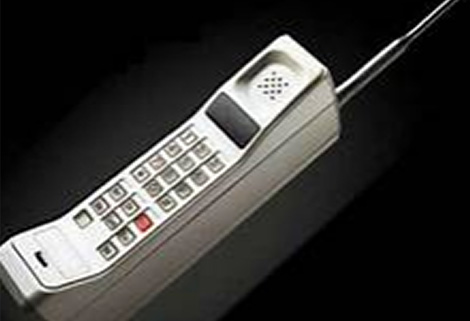
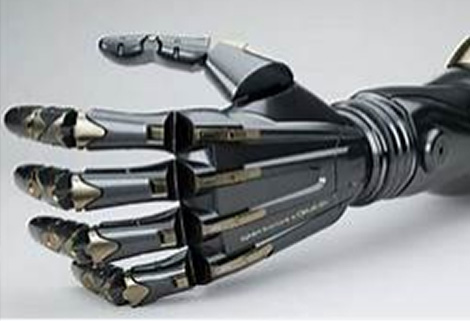
The Motorcycle – Gotlieb Daimler / Edward Butler 1884
The question is who invented the motorbike?
Two people are credited with this invention, firstly Gotlieb Daimler and secondly Edward Butler are both listed as the first designers to achieve this.
Throughout the years, the motorbike has been associated with freedom, excitement, gangs and generally being cool and cruising down Route 66 on a Harley. How many characters in film and TV shows gave the impression of acting cool whilst riding a motorbike? The ones that spring to mind are Steve McQueen in The Great Escape, Marlon Brando in The Wild One and who can forget Henry Winkler as the Fonz in Happy Days. Another interesting fact concerns the TV series Chips, which told the story of 2 motorcycle cops in America, one of the stars Erik Estrada, had to have an 8 week intensive course to be able to drive a bike - not a normal one, but a massive Harley Davidson.
Throughout the entire series, he never held a motorbike licence whilst playing a policeman; you couldn’t make it up could you?
Since its introduction, back in the late 1800`s, the motorcycle has developed into a vital piece of transportation; countries like Italy, India, Japan, Thailand and Vietnam rely heavily on them, so much so, that Thailand has 100 million scooters in use, there are literally tens of thousands lining the streets, including every single brand from Vespa`s to Harleys.
Another eastern country that relies heavily on the motorbike is Vietnam, which has a massive motorcycling population with over 86% of people owning one.
In Italy it is practically a religion to own a Vespa, (which means Wasp) especially in the bigger cities such as Rome and Milan where space is at a premium.
Like cars, motorcycles have become bigger, better, faster, more stylish and sought after. From humble beginnings the motorcycle has come a long way, creating some fascinating facts that make interesting reading, details like...
- Did you know that Sonny Barger, who is the founder of the Hells Angels, wrote in his autobiography that he preferred Japanese bikes to Harley Davidsons, something that was seen as blasphemous amongst the hard- nosed American based bikers?
- Talking of Hells Angels, there were three manufacturers who had the names Satan, Devil and Lucifer, imagine a group of Angels riding that lot!
- The first Harley Davidson used a tomato can as a carburettor as well as starting out as push bike manufacturers, in fact some of the worlds greatest motorcycle manufacturers didn’t start out as such, Ducati started by selling radio parts, Triumph made golf balls, Kawasaki developed planes and spaceships, Yamaha make pianos and synthesisers, whilst Honda make everything from robots to cars, from lawnmowers to Formula One cars.
Three of the biggest makers of motorbikes in the world consist of Honda, Yamaha and Hero Motocorp who hold the lion`s share, but the first production motorcycle was built by Hildebrand and Wolfmuller in 1894.
Again, like cars, motorcycles have recognised the need to help the planet due to climate change conditions that are occurring today, all the big companies including Harley Davidson have or are developing electric motorbikes to fall in line with the restrictions on fossil fuel vehicles targeted for 2030.
One thing is for sure, the motorbike is now seen as an essential piece of kit, rather than just a cool boys toy, and will become more popular as the financial grip takes hold, McQueen and Brando would have a fit!
The Sewage System – 4000 BC- India
How many people consider the sewage system to be a great invention? Not many I would imagine! But just think how the world would be without it; imagine the state we would be in.
How did the system come about? Well, we can trace the oldest system all the way back to 4000 BC in the Indus River in India. Come forward 1500 years BC and you have evidence of indoor plumbing being used by ancient Egyptians in 2500 BC.
The first modern - day flushing system was invented by Sir John Harrington in 1586, something that was ridiculed at the time. The idea did not reappear until 1880 when plumber Thomas Crapper updated the system, and the rest is history.
Alongside the toilet system came the toilet paper, which began circulation in 1857, but it was not until 1890 that Scott Paper decided to place it on a roll, but were too embarrassed by its risky nature and refused to put their name to it. During the late 17th Century, the River Thames was constantly used as a dumping ground for all and sundry, including bodies, oils and human waste, after an outbreak of cholera the stench became so bad that people were actually vomiting in the streets on a regular basis.
Members of the House of Lords and Commons also started to complain about the smell whilst they were in chambers, so much so that they passed a bill of law forbidding the dumping of waste in to the river.
One fact that is kept quiet, is the sewer system and the Internet have an unlikely connection that most People would not realise. The Internet is linked to a server, which is well known, but did you know that the Internet broadband cables are physically located in the sewer lanes?
When laying broadband cables, the sewer network remains the most practical way to avoid any unnecessary digging and disruption whilst installing new cables.
One of the biggest problems that sewers have in today’s society is the build up of fats and grease, alongside wet wipes and disposable nappies which cause enormous amounts of fat to build up.
Called “Fatbergs” by sewage workers, they can clog a whole City's system when the fat content solidifies under cooler temperatures, and when mixed together with the wipes, they become a formidable foe to clear. The problem is becoming so bad, that a Fatberg the size of a double decker bus was found in one system.
Fun facts about the sewage system include the following.
- Rock-star Alice Cooper once lost his 12 foot pet python called Yvonne down a New York hotel toilet system, only to be reunited two weeks later, after she was found in the sewer.
- In 1969 a Life magazine reporter was quoted as saying that “ All of Beverly Hills is flushing it`s toilet system at the same time, which has left the sewage system permanently stoned"
- Venice, as lovely and picturesque as it seems, does not have a modern day sewage system in its historic quarter; much of the raw sewage still goes straight into the canals.
- In Bulawayo, Zimbabwe, the entire town`s residents of over 1 million people are asked to flush their toilets at the same time twice a week to keep the sewage system clear.
- Dubai high rise blocks have so much waste that the sewer system cannot cope, so they decided to employ trucks to remove it on a daily basis - a 24 hour operation.
- Most genres have a Roman God or Goddess assigned to them, but did you know that there is a Goddess called Cloacia, who is the patron saint of the roman sewer systems and sexual intercourse in marriage, bit of a mixture don’t you think?
One thing that cannot be ignored, is the level of engineering that it takes to install a sewage system for a whole city, to get millions of tonnes of waste to drain away underfoot in silence everyday is no mean feat and has to be applauded.


The Submarine – Cornelius Drebbel – 1620
Most people are fascinated with submarines and how they work, how can a vessel that weighs literally thousands of tonne`s float under the water and rise and dive simultaneously?
Submarines were first invented for exploration purposes but soon became a military weapon when the powers that be, realized the potential.
The first submarine, designed in 1620 by Cornelius Drebbel, first dived to a depth of 15 feet in 1620, however there were early images created by Leonardo Da Vinci back in 1570; which sadly never came to fruition.
The first military version, appeared in 1776 and was designed by David Bushnell, it was the first type to be propelled by spiral props, which was later adapted in 1800 to be dual – propulsion.
Later the French Navy developed the first submarine that did not require human propulsion in 1863 and was known as the Plongeur.
When World War 1 started, the submarine, which was classed as a new weapon, terrorised the seas and oceans and claimed the sinking of ships at an alarming rate. One of the worst was the sinking of the SS Principle Umberto, which was returning to Italy when it was torpedoed by the Austro-Hungarian submarine, killing all 1926 lives on board.
The submarine became so effective, that 2439 allied ships were destroyed in WW1. It has continued to evolve through technical advancements, enabling the latest models to fire ballistic and nuclear weapons alongside cluster bombs and other armaments.
During World War 2, most will recall the part that the planes played in the defence of the country, models such as the Spitfire and Hurricane have a particular place in our hearts as the protectors of the skies, but the submarine became one of the most successful weapons in military arsenals, regardless of which side had them. The USA and Russia claim to have the most submarines in their fleets, with the US just edging it, but having more than twice the third largest, being Iran.
Some fascinating facts include…
- In 1968 a US nuclear submarine sank in the deepest part of the Pacific, although the position is known, its reactor and nuclear weapons were never found.
- To respect maritime heritage, the British Navy submarines regularly fly the Jolly Roger flag.
- Amazingly, only once has a submarine sunk another submarine in naval battle history.
- A tradition in the USA, involves the passing of a cribbage board, which is handed down to the next contender when an older submarine is retired, the latest owner of the board, is a submarine which was launched in 1978.
- As a nuclear deterrent, the United Kingdom has four nuclear submarines, each with an identified letter that contains written orders and instructions from the current Prime Minister, just in case Britain comes under threat or attack, the letters are destroyed and re-issued when a new PM is employed.
Flight – Orville and Wilbur Wright- 1901
Probably one of the most famous inventions of all time, flight comes out as one of the top three inventions named by the masses, as the most important and beneficial.
With the Wright Brothers (being the most renowned inventors) who first flew their first plane in 1903, which was called “The Wright Flyer” and travelled a distance of 120 feet, todays Boeing 787 can fly 10,000 miles on a single tank of fuel, which is certainly progressive.
Throughout the history of flight, there have been many significant and important developments, which have enhanced and developed the way flight travel has improved.
We have decided to list some of the more unknown and fascinating facts that might not be the normal things associated with flying.
- Did you know that English is the international language when it comes to flight? All flight controllers and commercial pilots who fly on international flights are required to speak English.
- The oxygen in a planes emergency system would only last for about 15 minutes once deployed.
- Pilots and co- pilots are not allowed to eat the same food, so to avoid any potential food poisoning amongst the flight cabin crew.
- The average Boeing 747 has around 150-175 miles of wiring on board, and can suck enough air through its engines to fill a Goodyear blimp in 7 seconds.
- When Concorde was decommissioned, after a tyre fire, the well-known TV presenter Jeremy Clarkson called it “an absolute tragedy that such a piece of great engineering and aeronautical technology was going to waste”.
- In the USA, 2 million passengers board more than 30,000 flights each day, with Hartsfield – Jackson airport in Atlanta being the busiest, with over 96 million passengers a year flying.
- Airbus are working on a new concept idea for planes, they are considering building a plane that is transparent, that will give the passenger a 360 degree clear angle view whilst in the air, if you weren’t afraid of flying, you soon will be!
- Between 43%-54% of pilots surveyed in the UK, Sweden and Norway admitted to falling asleep whilst flying, amazingly one third stated that when they awoke, they found the co-pilot also asleep as well.
- In 1986 the plane Voyager flew all around the world without stopping or refuelling, which is certainly more than the 120 feet that the Wright Brothers managed all those years ago.
Spectacles and Sunglasses – Edward Scarlatt – 1725
The earliest spectacles are attributed to Edward Scarlatt back in 1725, although the first known devices for eye corrections, date back to 1000 AD and were called a reading stone, which was basically a glass sphere similar to a magnifying glass which helped long sighted people to see more clearly.
Contact lenses on the other hand are seen as a modern day invention, which is not the case and can actually be dated back to the 13th century in Italy, where glass was placed directly onto the eyes, similarly to today’s versions, rather than being mounted into frames.
Contact lenses as we know them today, first started in 1949 and didn’t become mainstream until the 1970`s.
According to recent studies and research around the world, 25% of the total population requires some sort of eye correction, whether it through spectacles or contact lenses, that equates to a quarter of the people on the planet not being able to see properly.
Apparently, the Roman Emperor Nero is reported to have worn a form of Sunglasses whilst watching the Gladiator games in the Coliseum.
Other famous spectacle wearers include Buddy Holly, Bono, John Lennon, Alan Carr, Eric Morecambe, Dennis Taylor, Sue Pollard, Gandhi, Woody Allen and probably the most famous of all, Elton John, who supposedly has 30,000 pairs in his collection.
Although Nero wore a type of eye protection from the sun, sunglasses as we know them first appeared back in the 12th century in China, where flat crystals of smoky quartz were mounted in frames for personal use to deflect the suns rays.
It is also suggested that early Judges would wear a form of sunglasses to hide their emotions whilst sitting at court judging cases, hiding their emotions from the accused.
Rubber – Charles Goodyear – 1844 (Patented)
Charles Goodyear is credited with the invention of rubber, as we know it, back in 1844. This was down to his ability to undertake experiments which resulted in the breakthrough of vulcanisation, which he gained a patent for.
Goodyear was a self taught chemist and manufacturing engineer who had experimented with various substances and minerals before discovering the rubber process. Prior to this, rubber in its earlier form can be traced back to a tribe called the Olmecs, who discovered that if you boiled the latex from the tree, it would become soft and pliable.
They used it to make balls and played games with it, similar to football and basketball. This was witnessed by Christopher Columbus in 1495.
Because the latex is derived from a tree called Herea Brasilensis in South America, early explorers tried to bring it back to Europe and the East. One such man called Henry Wickham brought back rubber tree seeds that were later planted in England and sent to Sri Lanka, Indonesia, Singapore and Malaysia.
Rubber has got to be one of the most recycled products in the world alongside plastic, glass and tin. Each year 250 million tyres are recycled every year and re-shaped or moulded into different products, the rubber we use today is not actually 100% pure, but synthetic, which is better for the environment.
Statistics show that around 33 billion pounds of rubber are produced every year, and according to researchers, make around 40,000 different products, ranging from tyres and seals, to mats and shoes.
Today, natural rubber from tree sap only accounts for 40% of the rubber produced today, with 60% made up from man-made synthetics.
In the early years South America produced most of the rubber, but today South East Asia now produce 94% of the product due to mass plantations.
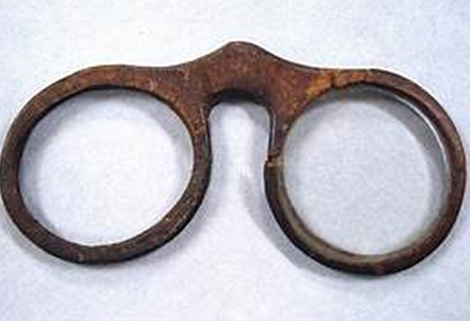

Helicopters – 1907 – Paul Cornu
Ever since the year 400 BC, when Chinese children played with bamboo flying toys, people have been interested in this form of flying, but it wasn’t until the early 1480`s that a design for a helicopter was produced.
A French bicycle maker called Paul Cornu is credited with the inventing the first proper helicopter back in 1907, his model managed to hover above the ground for mere 20 seconds at a foot high
Another inventor who cemented himself into aviation history is American Igor Sikorsky, who was the first to produce a mass made helicopter, known as the R-4, which played a significant role in World War 2. In fact by the end of the war, Sikorsky had produced more than 400, which were mainly built for the military.
Like planes, helicopters have come a long way in a short time, development has been rapid. With the help of modern technology, the helicopter has gone from strength to strength with many machines now used for leisure, search and rescue, travel and commercial pleasure.
Modern day machines can fly distances of 1200 miles and reach speeds of up to 300 miles an hour, lifting up to 56 tonnes in weight, making it a formidable piece of kit.
The early day pioneers who played such important roles in the evolution of the helicopters such as Paul Cornu, Etienne Oehmichen and Thomas Edison who flirted with the idea for many years, would be very proud of the progress that has been made.
Computers – Charles Babbage – 1833
Most people when asked would say that the computer was a modern-day invention, but Charles Babbage is credited with inventing the first computer, in fact he invented all the parts that we use for our computers in today's society.
The first modern-day computer as we know it, was updated some 120 years later, and was known as the Z1, credited to Konrad Zuse in 1936.
Alan Turing who is best known for cracking the enigma code during WW2, also had a connection with the development of the computer, his Turing machine was seen as a mathematical model of computation and was invented by him.
The first computer disc drive to use removable media, was the IBM 1311, the machine was so big that it resembled a washing machine, but amazingly it only had the storage capacity of five megabytes.
The first known computer programmer was a lady called Ada Lovelace, who was a mathematician and a writer. She is known for her work on the analytical engine, which was Charles Babbage`s early model.
Virtually everybody who has used a computer has at one point used a mouse to navigate around the screen, but do you know the inventor of the contraption?
He was called Douglas Engeblart. He made the body out of wood with metal wheels which allowed the device to move freely back and forth. The electric cord stuck out of the back, resembling a rodent's tail; hence the word mouse was used.
One of the major players in the computer world is Microsoft, their invention, Windows started out by being called Interface Manager, but they decided to change it, as Windows seemed to be more appealing.
Intel developed the first microprocessor 4004, which literally set the path for the modern computing era, surprisingly it was meant to be for a calculator, which evolved.
Computer programming has become the world's most sought after profession, with more and more people turning to IT as a career.
Believe it or not, the launch codes for the US nuclear missiles, was at one time 00000000, bit difficult to remember, I think not! It’s a good job that the missiles were never needed, how would they remember the code?
Like the mouse, everybody has played solitaire on their computers at one point, but the game played a teaching role for users, as it helped them to develop their skills in using the mouse, enabling the user to move the icons around the screen easily.
The first computer, the ENIAC weighed an incredible 27 tonnes and took up 1800 square feet, a bit different from today's laptops.
When you think of film animation, you immediately think of drawing and sketching diagrams similar to early cartoons, but most animation today is done using a computer: major films, like the Toy Story series, Monsters Inc and Up are all computer generated.
This has not always been the case, when John Lasseter was employed by Walt Disney Studios, they decided to fire him as he believed that computer animation was a thing of the future, and felt that Disney should be using more of it. Disney however disagreed. How times have changed!
![]()
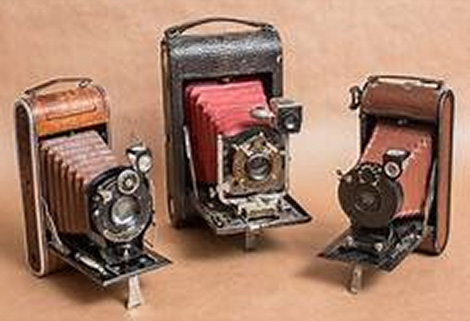
Chocolate – Mayans Aztec- 3rd Century
When asked, how many people would gladly give up chocolate, not many I would imagine?
But did you know that chocolate was invented as such by the early Mayans - Aztecs in Ecuador as early as the 3rd century, and rather than eat it as a solid; they used to use the substance as a drink.
The first chocolate bar as we know it, was produced by J. S. Fry who were a British based chocolatiers and are credited with making the first chocolate bar.
Daniel Peter, a Swiss chocolatier and entrepreneur spent eight years trying to perfect the ingredients for milk chocolate, he later discovered that the answer lay in condensed milk. Everybody in the world is so pleased that he did, especially the chocolate industry which earns an astonishing $130 billions dollars a year from it.
Chocolate comes from the fruit of the cacao tree which is located in Central America, Southern America and Mexico and was used at first as a currency. The fruits of the tree which are called pods, contain around 40 beans, with each tree producing 2500 cocoa beans each year, every pound of chocolate contains around 400 beans.
Everybody likes chocolate, whether its milk, white or the dark variety, but did you know the health issues that concern the subject? Such as, dark chocolate is nutritious because it contains fibre and minerals, which are soluble; it also contains compounds that are organic and has anti-oxidants. Studies have shown, that dark chocolate also improves the blood flow to your brain creating waves, which helps to lower blood pressure.
Another fascinating study shows that dark chocolate may help to lower cholesterol levels and lower the risk of heart disease.
The taste of chocolate helps to ward off depression and helps combat stress levels.
The Swiss consume the most chocolate per nation, with Germany, Ireland and the UK close behind.
The Compact Disc – Germany 1979 - Philips and Sony
CD`s as we know them were first produced in Germany in 1979 when electronic giants Philips and Sony combined to update and enhance their video technique, which Philips had tried to develop previously with their laser disc. This evolved into the compact disc.
Some fascinating facts about CD`s include:
- The playing time was arranged at the onset to include 74 minutes so to incorporate the recording of Beethoven`s 9th symphony without interruption.
- The first album to be produced on compact disc format was Abba`s the Visitors, which came out in 1979.
- The first commercially manufactured album was Bruce Springsteen`s Born in the USA.
- Dire Straits, Brothers in Arms album became the first 1 million copy seller, with the Eagles Greatest hits album selling the most copies with over 36 million sold.
By 2007, world sales of CD`s reached 200 billion, and if you piled all the CDs together they would go around the world an incredible 6 times, although sales have declined dramatically over the past 10 years due to the introduction of downloading and streamed music. It would seem that the CD has now had its day, which is a shame as you cannot beat the quality of sound that they produce.
The first commercially available CD player was the Sony CDP-101, which was released in 1982 at a cost of £922, how times have changed, now you can pick up a CD player at most boot sales for around £5.00.
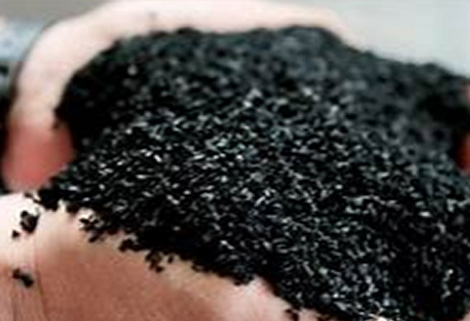

Video Cassette Recorder – 1956 – Ampex

The first video camera recorder was produced by a company called Ampex in 1956 and was as big as a piano and cost a staggering $50,000 dollars, with each cassette costing a staggering $300.
The VCR as we know it today was first developed by Sony back in 1970 and revolutionised the way people viewed television forever. For the first time people could record their favourite programmes and watch them at their leisure. Prior to this, there was literally nothing available. If you missed your programme or film, tough!
Legend has it, that David Bowie was the first person in England to own a video cassette player. Whether this is true is unknown and unfortunately we cannot ask the great man himself.
During its heyday the VCR was the piece of electrical equipment to have, with virtually every household owning one. Unfortunately after the invention of the DVD player and downloading streams, the VCR is now practically obsolete, which is a real shame as there are thousands of films around that are in perfect condition, but nobody wants; you cannot give them away.
Although the VCR player and cassettes are no longer wanted, the actual taking of videos via phones and laptops is probably one of the most popular pastimes in today's society. Think about it. You Tube would not be around if it were not for people videoing scenes and events.
Facebook is another video genre that owes it success to video filming, with over 20 million videos being uploaded each month.
Glass – 3600 BC - Egyptians
Before man figured out how to craft glass, nature was already making it, during thunderstorms' If lightning strikes sand, the heat generated fuses the sand into long slender glass tubes called Fulgurites.
Glass is nothing new to humans, having been around for thousands of years. Some archaeologists can claim glass objects dating back to over 6000 years in Egypt, Syria, Iraq and Kuwait.
Apart from being one of the most durable and practical items around, glass, alongside plastic, rubber and paper is one of the best recycled materials. So much so that a recycled glass container can go from a recycling bin to a supermarket in 30 days.
According to specialists, glass has a superior breakdown rate, with some claiming it takes around 1 million years to decompose entirely.
China is the largest producer`s of glass in the world today, followed closely by Germany.
Space Travel & Exploration- 1957
Most people when asked to comment on space travel will automatically relate to spaceships, rockets, UFO`s and Aliens, but when did space travel actually become a reality?
One of the questions about space, is when does it begin? Does it start at night when darkness descends?
Well in fact, it starts 62 miles above the Earth and can be reached in a space shuttle in around 8 minutes, something that is called the Karmen Line.
But when did the space race begin?
The first satellite known was called Sputnik, launched back in October 1957 by the now defunct Soviet Union who was showcasing its power of military and technical knowledge. Sputnik stunned the world by becoming the first artificial satellite marking the new space exploration race, something that infuriated the US so much, that they decided to run their own space programme, which resulted in the formation of NASA.
Before humans could actually take off in rockets from the Earth's surface, animals were regularly used in experiments, including monkeys and dogs. Initially a monkey called Albert was the first to be sent into space by NASA, he managed to reach a height of 39 miles, but unfortunately suffocated due to technical difficulties.
Alberts 2-5 followed and suffered the same fate as the original Albert, but the next two - a pair called Able and Miss Barker - did survive their flight after they reached a height of 65 miles aboard a Jupiter rocket.
The Soviets decided to try their own animal experiments by sending a dog called Laika into space just a month after sending Sputnik into orbit, but like the monkeys, the dog died during the flight.
Although the experiments were fatal for the animals, they did answer a lot of questions for future space travel and propelled the advancement of humans into space.
Since the 1950`s and early 1960`s, space travel has escalated enormously. Probably the best known set of space missions has to be the Apollo series. These missions captured the hearts and minds of the world's population who imagined space rockets, landings on strange planets and moon walks.
Whether Apollo 11 actually landed or not is another matter, but the Apollo missions definitely changed the way the world viewed space travel.
The next step was trying to get a spaceship returned to the Earth without discarding the majority of its body in outer space; something that was achieved with the invention of the Space Shuttle, which changed the way space travel was conducted.
This coincided with the building of the Space Station Structure, which was the result of a United Nations project and which allowed astronauts to live in space above the Earth`s atmosphere. Something that if you had mentioned it some years ago, people would have thought that it was from Star Trek or 2001 Space Odyssey.
The structure has now been working for many years conducting experiments on how future generations may eventually reside in space.
With technology growing at an alarming rate, space travel has become a topic that is again at the forefront of human thinking. Will we ever see the colonisation of Mars? Who knows? But remember, they didn’t believe that a man could fly once, and look how that turned out!
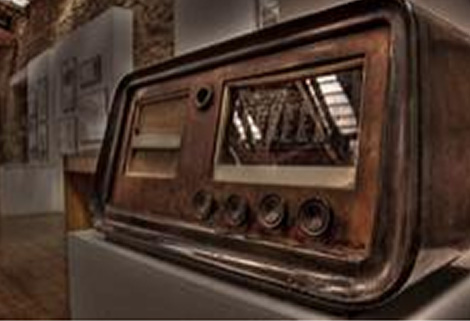

Medical Science - Various
Throughout the years there have been many fantastic inventions and innovations that have enhanced the World. Apart from the ones already mentioned, we have seen the creation of clocks, the electric motor, jet engine, musical instruments, batteries, steam trains, telephones and the humble button. But one of the biggest advancements in engineering, technology and pure genius lies in the medical world.
Medical science has literally made unbelievable strides over the past 50 years. When you consider the amount of progression that Scientists, Doctors, Surgeons and Medical Practitioners have made it is quite astounding.
If you go back to the early 20th century and see how the medical world performed compared to now, it literally reads like a work of fiction; the advancements in medical science continue to astound and amaze us.
With progress being made in virtually every quarter, you wonder where this is going and how far can the inventors and engineers take it? Looking at some of the inventions that started out as new ideas, but are now established procedures is quite astonishing; in no particular order these inventions have changed the way people live their lives.
- The discovery of DNA by Alec Jeffreys in 1984, not only explained the way the make up of the human body is constructed, but helped forensic science solve crimes and pinpoint criminals, something which is an everyday occurrence in policing today.
- Imagine, if Edward Jenor had, not made the discovery of the humble vaccination, in 1796, what state the world would be in today after the recent Covid 19 pandemic?
- How about the invention of plastic surgery? Not everybody sees the procedure as pure vanity, take out all the over indulged Z list celebrities who change their appearance at the drop of a hat from week to week, going from looking normal to utterly stupid and in some instances grotesque. Plastic surgery has changed people`s lives, especially those who have been injured through fires and accidents, enabling people to rebuild their lives and continue in their everyday activities, ignoring those who just want bigger boobs or butts.
- X-rays are now considered old, since the invention of the MRI and CT scanners, but let's not forget the significant role that they played in early medicine, if Wilhelm Conrad Rontgen had not fulfilled his experiments in 1895, millions of people would have suffered in silence without knowing what was happening beneath their skin. X –rays may be seen as old, but boy are they vital.
- Talking of MRI `and CT scanners, how impressive are they? Whenever I have witnessed the workings and results of these machines, I have come away thinking to myself ”How wonderful was that”? To see the inside of your own body on a screen in such detail is quite mesmerising, I had to have a procedure on my face and had a scan of my head, the surgeon explained in detail what was happening and how they were going to correct it, to see an image of your head, skull and face is a really strange feeling as I had never seen it before.
- Another massive advancement has to be in surgery itself. Imagine saying to someone many years ago that you could take out a person's organ and replace it with another! This would have been looked on as pure science fiction. But the level of surgery is now so advanced, that hearts, kidneys, lungs, spleens, nerves and livers are now seen as normal, there are now procedures being carried out concerning face transplants, hand and feet replacements and deafness and blind conditions being reversed.
When you consider the technology and engineering advancements that have been made over the past 70 years, it is either quite frightening or exciting to imagine what the future holds depending on how you look at it, but one thing is for sure, the medical advancements are going to get bigger and better and more experimental.


To sum up, all of these inventions have enhanced peoples lives in one way or another. We as engineers fully understand the time, effort, stress, hardship and disappointments that it takes to get these ideas to the mainstream, and hope that the trend in inventions and new ideas carries on for many years.
To all the engineers, pioneers, scientists, inventors, innovators and idealists, we support you, because without you, we would all still be wallowing in the mud.


